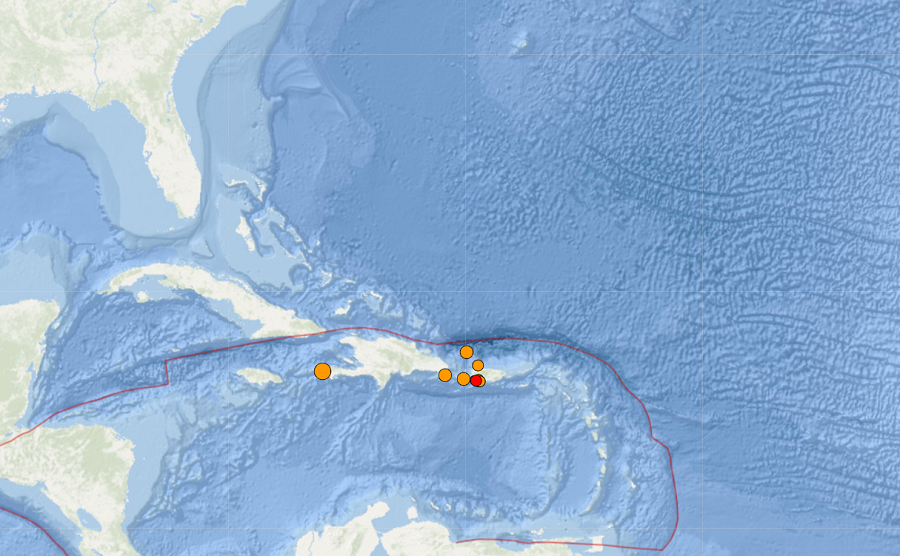PORT-AU-PRINCE — A series of earthquakes has rattled the Caribbean this week, including a moderate 4.6 which struck along western Haiti overnight Thursday night. Fortunately, none of the fifteen earthquakes that struck the Caribbean were strong enough to generate a tsunami; as such, there is no risk of tsunami to the U.S. Virgin Islands and Puerto Rico.
The second strongest earthquake in Friday’s seismic activity happened on the east coast of the Dominican Republic. A 4.0 magnitude earthquake struck there that morning.
While Haiti saw the strongest earthquake, Puerto Rico has seen the most. Most of Friday’s earthquakes struck along the south coast of Puerto Rico where a strong earthquake hit in 2020. These earthquakes are likely continued aftershocks from that strong earthquake that struck the island in January 2020.
That 6.4 created extensive damage in Puerto Rico, including widespread power failures across much of the island. An earthquake swarm started here in December 2019 and unrest has continued since. The strongest earthquake in the last 24 hours is a 3.3 which struck off the north shore of the island.
These earthquakes are occurring near the northern edge of the Caribbean Plate, a mostly oceanic tectonic plate underlying Central America and the Caribbean Sea off of the north coast of South America.
The Caribbean Plate borders the North American Plate, the South American Plate, the Nazca Plate, and the Cocos Plate. The borders of these plates are home to ongoing seismic activity, including frequent earthquakes, occasional tsunamis, and sometimes even volcanic eruptions.



